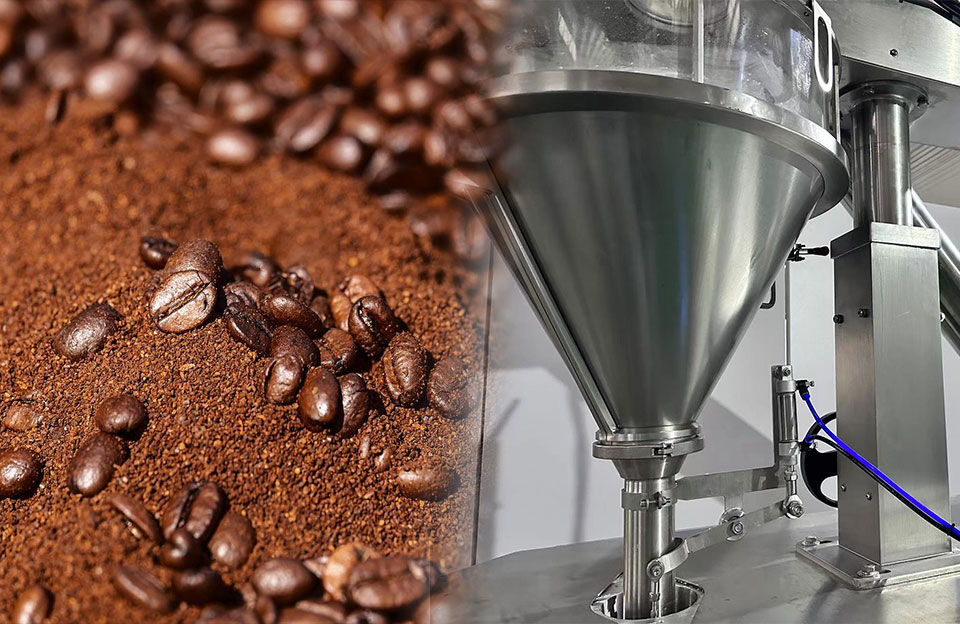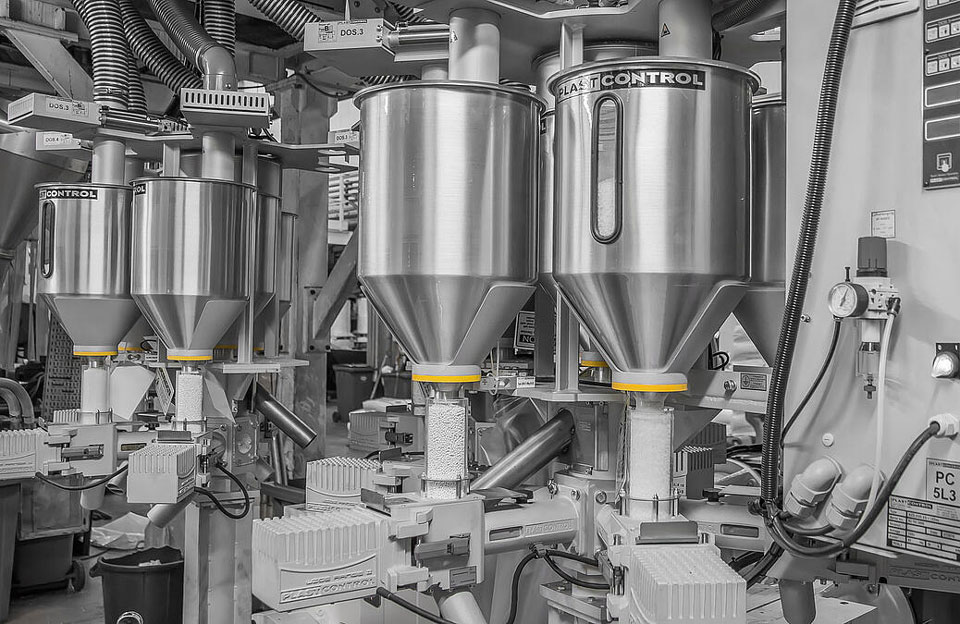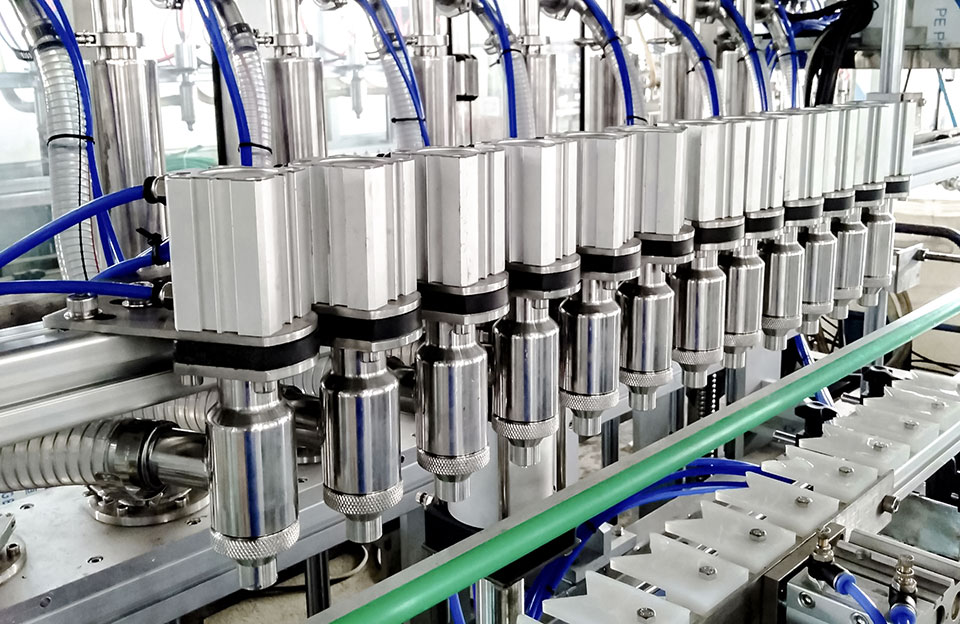Coffee powder, a widely consumed beverage known for its rich aroma and flavor, is a favorite morning pick-me-up and social drink by people worldwide. The coffee powder industry is essential to the global food and beverage industry. It involves producing, processing, and distributing coffee powder extracted from roasted coffee beans. The production process of coffee powder is complicated and requires many machines, and the powder filling machine for coffee powder is essential.
Coffee Powder Production Process
The production process of coffee powder involves several stages, from harvesting the coffee cherries to processing and grinding the beans into fine powder. Here is an overview of the coffee powder production process:
- Harvesting: Coffee cherries are selectively harvested when they reach the appropriate level of ripeness. This is typically done by hand, ensuring that only the coffee cherries are picked. Some coffee farms also employ mechanical harvesters for large-scale operations.
- Processing: There are two primary methods of processing coffee cherries:
- Dry processing (Natural method): The harvested coffee cherries are spread out in thin layers to dry under the sun. They are regularly turned to ensure even drying. Once the coffee cherries have dried, the outer skin, pulp, and parchment layer are removed, leaving behind the dried coffee beans.
- Wet processing (Washed method): The coffee cherries are first pulped to remove the outer skin and pulp. The remaining beans, covered in a sticky mucilage layer, are then fermented in water tanks for a specific period. After fermentation, the beans are washed to remove the mucilage and dried under the sun or using mechanical dryers.
- Milling: The coffee beans still have a parchment layer after drying. To remove this layer, the beans go through a process called milling. The parchment layer is mechanically removed, resulting in green coffee beans.
- Roasting: Green coffee beans are roasted to develop distinct flavors and aromas. The roasting process involves subjecting the beans to controlled heat, causing chemical reactions that transform the beans’ internal composition. Roasting times and temperatures vary depending on desired roast profiles and coffee types.
- Roasting: Green coffee beans are roasted to develop their distinct flavors and aromas. The roasting process involves subjecting the beans to controlled heat, causing chemical reactions that transform the beans’ internal composition. Roasting times and temperatures vary depending on desired roast profiles and coffee types.
- Grinding: Once the roasted beans have cooled, they are ground into fine particles to create coffee powder. Grinding can be done using commercial grinders or home coffee grinders. The grind size can vary depending on the intended brewing method (e.g., espresso, drip coffee, French press).
- Packaging: The coffee powder is then packaged into various formats, including bags, cans, jars, or coffee capsules. Packaging may involve sealing the containers to maintain freshness and prevent moisture or air from entering. Some manufacturers also incorporate degassing valves in the packaging to release carbon dioxide gas produced by freshly roasted beans.
Applications of Powder Filling Machines for Coffee Powder Industry
Powder filling machines for coffee powder plays a vital role in the coffee powder industry, providing efficient and accurate packaging solutions. Following are some applications of powder filling machines for coffee powder:
- Packaging Coffee Powder: Powder filling machines for coffee powder are used to accurately measure coffee powder and fill it into various packaging forms such as cans and bags, etc.
- Automation of the Filling Process: The powder filling machine realizes the automation of the filling process, reducing labor and improving production efficiency. They can handle large volumes of ground coffee, allowing manufacturers to meet high demand and increase overall productivity.
- Customizable Filling Options: The powder filling machines for coffee powder offers customizable filling options to meet specific packaging requirements. Manufacturers can adjust filling volume, speed, and precision to the desired pack format, ensuring the right amount of ground coffee is dispensed into each pack.
- Integration of Sealing and Capping: Many powder filling machines are designed to be integrated with sealing and capping machines. This integration enables a seamless transition from filling to sealing, ensuring proper package closure and preventing contamination.
- Improve Product Quality: The powder filling machine can precisely control the filling process, reducing the risk of overfilling or underfilling. This consistency ensures that customers receive the correct quantity of ground coffee packs, improving overall product quality and customer satisfaction.
- Improve Efficiency and Productivity: By automating the filling process, the powder filling machine helps coffee powder manufacturers simplify operations, save time and increase productivity. These machines can operate at high speeds while maintaining precision, resulting in efficient production and faster turnaround times.
- Improved Hygiene and Cleanliness: Powder filling machines are designed with hygiene in mind, often incorporating features such as dust extraction systems and easy-to-clean surfaces. This helps keep the production environment clean and prevents contamination of the coffee grounds.
Conclusion
Powder filling machines are essential in the coffee powder industry, providing reliable, efficient, and accurate packaging solutions. They contribute to increased productivity, improved product quality, and streamlined operations, allowing manufacturers to effectively meet the market’s demands.


